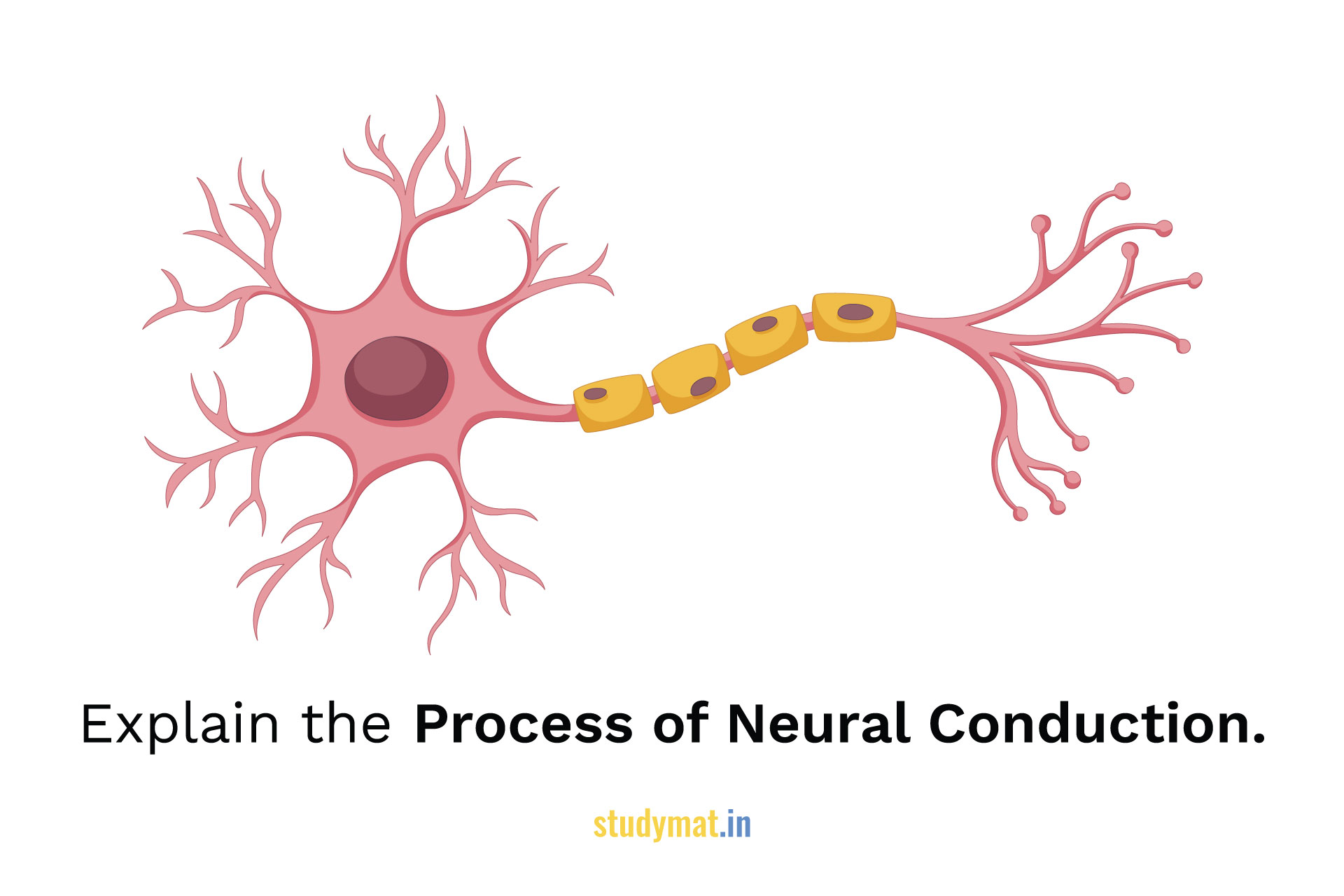In this article, we will discuss What is Neuron? Describe the Structure of a Neuron. Explain the Process of Neural Conduction.
Process of Neural Conduction.
A Neuron that is at rest, that is not firing a nerve impulse or a message, is actually electrically charged. There is a solution inside like jelly and outside the cell which consists of charged particles called ions. There are electrical charges across the neural membranes that constitute the positively charged ions, called cations, and negatively charged ions called anions. Both positive and negative charged ions are present inside and outside the cell. There are mainly negatively charged ions inside the cell and positively charged ions outside the cell because of diffusion and electrostatic pressure. Diffusion is the process of ions moving from areas of high concentration to areas of low concentration. Electrostatic Pressure is the balance of electrical charges when the ions are at rest). The positively charged ions are sodium (Na+), Potassium (K+), Calcium (Ca2+), and chloride (Cl-).
There is a comparatively more positive charge next to the plasma membrane on the outside and a comparatively more negative charge on the inside of the membrane. This difference in electrical charge across the membrane is called Membrane Potential. The neuron is said to be resting in an inactive state. It displays a resting potential or membrane potential of -70mV. This is called Resting Membrane Potential. The magnitude of the potential difference is measured in volts (V) or millivolts (mV). The Resting Membrane Potential (RMP) is maintained with the help of the principle of diffusion, ion channels, electrostatic pressure, and sodium-potassium pump.
The nerve impulse is brief and it goes through the cell body to the axon to the terminal buttons. When there is a stimulus at the spike initiating region that reaches the threshold of excitation, it depolarizes the membrane. It leads the sodium ions to move into the cell with the help of forces of diffusion or via electrostatic pressure. This makes the inside of the membrane more positive concerning outside for a temporary period from -70 mV to +50mV. The action potential reaches its peak in about 1 millisecond. No more sodium can arrive in the cell and potassium ions start leaving the cell. This reasons the membrane potential to restore itself to its resting state.
The Action Potential is an all-or-none phenomenon, such that whenever it is initiated. It sinks the axon to its terminal buttons or it doesn’t occur at all. Therefore, information is sent down axons through small electrical impulses known as Action Potentials. The size of the nerve impulse or amplitude depends upon the particular neuron. When the potassium ions begin leaving the cell it causes a state of depolarization of the membrane. Once sufficient positively charged potassium ions are released out of the cell, the membrane reaches its resting state. Sometimes too many potassium ions leave the cell, which making the membrane slightly hyperpolarized. But then the potassium channels close making the membrane and reach its normal resting state again.
Follow us:
If you like this article, you can Follow us on Facebook.
Also, you can Join our Official Facebook Group for QnA Sessions and Discussions with the worldwide IGNOU community.

